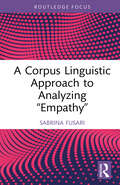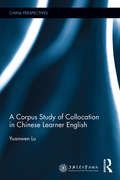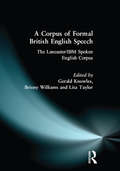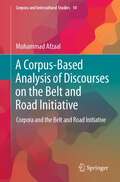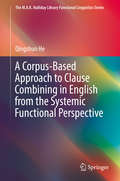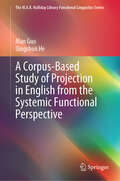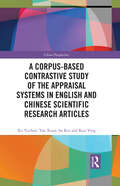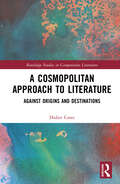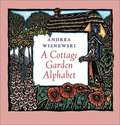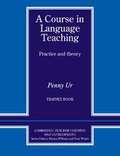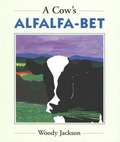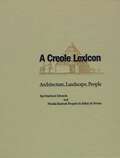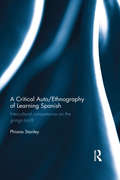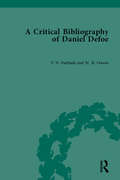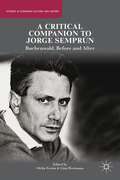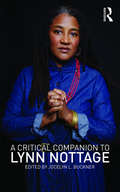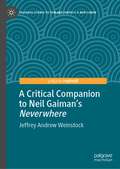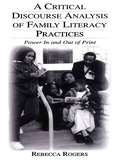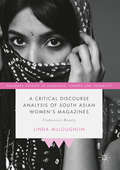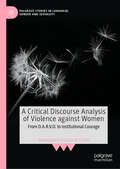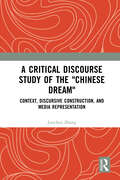- Table View
- List View
A Corner of White: Book 1 Of The Colors Of Madeleine (The Colors of Madeleine #1)
by Jaclyn Moriarty“[A] fantasy series opener unlike anything else out there . . . Quirky, charming, funny, sad: another winner from this always-surprising author.” —Kirkus Reviews (starred review)A Boston Globe-Horn Book Honor BookA Kirkus Best Book of the YearA School Library Journal Best Book of the YearA Horn Book Fanfare BookThis is a tale of missing persons. Madeleine and her mother have run away from their former life, under mysterious circumstances, and settled in a rainy corner of Cambridge (in our world).Elliot, on the other hand, is in search of his father, who disappeared on the night his uncle was found dead. The talk in the town of Bonfire (in the Kingdom of Cello) is that Elliot’s dad may have killed his brother and run away with the Physics teacher. But Elliot refuses to believe it. And he is determined to find both his dad and the truth.As Madeleine and Elliot move closer to unraveling their mysteries, they begin to exchange messages across worlds—through an accidental gap that hasn’t appeared in centuries. But even greater mysteries are unfolding on both sides of the gap: dangerous weather phenomena called “color storms”; a strange fascination with Isaac Newton; the myth of the “Butterfly Child,” whose appearance could end the droughts of Cello; and some unexpected kisses . . . “Startlingly original fantasy.” —E. Lockhart, #1 New York Times–bestselling author“A marvelous novel—in every sense of the word.” —Deborah Harkness, #1 New York Times–bestselling author “[A] genre-blending feat of stylistic energy.” —The Bulletin of the Center for Children’s Books (starred review) “Moriarty’s marvelously original fantasy is quirky and clever.” —Booklist
A Corpus Linguistic Approach to Analyzing "Empathy" (Routledge Focus on Applied Linguistics)
by Sabrina FusariThis volume offers an in-depth corpus linguistic analysis of the word “empathy” aiming to foster unique insights into a word widely found across contemporary discourses and into methodological innovations for analyzing large corpora. Given the understanding of empathy’s importance for individual and social development, A Corpus Linguistic Approach to Analyzing “Empathy” demonstrates the potential of a corpus approach to shed new light on a significant yet difficult-to-define concept. Fusari systematically applies the use of concordances and other corpus output to derive patterns and recurrent phraseologies in the 36+ billion-word electronic corpus, English Web 2020, to help readers grapple with key ideas around empathy. Such questions include what we really mean by empathy, whether it is always positive, whether it is learned or innate, and whether empathy is truly what “makes us human”. The book contends with these questions across disciplines, from the clinical to the psychological and philosophical to the linguistic and discursive. Opening new areas of research into inclusive language and the use of corpus tools to analyze individual terms, this book will be of interest to students and scholars in corpus linguistics and applied linguistics, as well as such fields as cognitive science, psychology, philosophy, and allied health.
A Corpus Study of Collocation in Chinese Learner English (China Perspectives)
by Yuanwen LuCollocation is an important tool in describing lexical behaviour in language and has received increasing attention in recent years. Based on two corpora: LOCNESS (the Louvain Corpus of Native English Essays) and MLC (the Non-English major Mainland Chinese Learner Corpus), this book explores the features of Chinese learner English with analysis of grammatical and lexical collocations. The findings show that Chinese university students use collocations with considerably less variety and Chinese language and culture exert a substantial influence on their English writing. It also discusses ways to tackle the problems Chinese English learners face and the pedagogical implications for teaching English and learning English collocations. As one of the first systematic studies to investigate collocations in Chinese learner English based on learner corpora, this book not only analyzes how Chinese learners use collocations in their English writing, but also provides significant implications for foreign language teaching and learning.
A Corpus of Formal British English Speech: The Lancaster/IBM Spoken English Corpus
by Briony Williams Gerry Knowles Lita TaylorThis work provides 50,000 words of prosodically-transcribed text from a variety of sources. The introduction explains fully the transcription conventions, the structure of the corpus and its relationship to other computer corpora, and provides examples of different versions of texts.
A Corpus-Based Analysis of Discourses on the Belt and Road Initiative: Corpora and the Belt and Road Initiative (Corpora and Intercultural Studies #10)
by Muhammad AfzaalThis book adopts a corpus-based critical discourse analysis approach and examines a corpus of newspaper articles from Pakistani and Indian publications to gain comparative insights into the ideological construction of China’s Belt and Road Initiative (BRI) and the China-Pakistan Economic Corridor (CPEC) within news discourses. This book contributes to the works on perceptions of BRI in English newspapers of India and Pakistan. A multi-billion-dollar project of BRI or the "One Belt One Road” (OBOR), CPEC symbolizes a vision for regional revival under China's economic leadership and clout. Propelled by the Chinese Premier’s dream to revive the Chinese economy as well as to restructure and catalyze infrastructural development in Asia, BRI is aimed at connecting Asia via land and sea routes with Europe, Africa, and the Middle Eastern states.
A Corpus-Based Approach to Clause Combining in English from the Systemic Functional Perspective (The M.A.K. Halliday Library Functional Linguistics Series)
by Qingshun HeThis book presents corpus-based research on functional syntax. It is the first book to present a comprehensive investigation into grammatical metaphor in English clause combining in large-size corpora. By providing a systematic illustration of features such as parataxis, hypotaxis and embedding, it fills a gap in the systemic functional literature. It also offers insights into testing grammatical metaphors using a corpus linguistics methodology. The book is a useful resource for anyone interested in writing development.
A Corpus-Based Study of Projection in English from the Systemic Functional Perspective (The M.A.K. Halliday Library Functional Linguistics Series)
by Qingshun He Man GuoThis book presents a comprehensive study on the phenomenon of projection in English language, drawing upon Halliday’s systemic functional linguistics (SFL) model. It aims to clarify the grammatical status of projecting and projected clauses and explore their synchronic distribution features as well as diachronic evolution patterns. This book provides insights into the understanding of the grammatical status of projection-related clauses. Furthermore, the uncovering of historical evolution trends contributes to the literature on grammatical metaphor in SFL. From a practical standpoint, the empirical investigations into the relationship between projection and text technicality provide important implications for English teaching pedagogy and discourse analysis.
A Corpus-assisted Multimodal Analysis to Policy Addresses of Macao SAR Government: Two Decades of Change in Macao (Corpora and Intercultural Studies #11)
by Michelle Lam Sut IThis book introduces an integrated framework with corpus-assisted approach to deal with large set of data of discourse with multimodal factors to investigate how policy addresses (the government reports of Macao SAR) as a discourse type function in the social changes of Macao SAR through discussing the social factors to the production and consumption of policy addresses. The book explores research models or methodology in dealing with the contemporary topics in translation studies with a detailed presentation of the application of an analytical framework which marries corpus-assisted analysis, discourse analysis from socio-cultural perspective and multimodality with translation studies. Withal, the book is with the chapters to review the development of the social approach to discourse analysis and to introduce the stories of Macao with the summary of the development of this special region, in academic field, political and cultural fields.
A Corpus-based Contrastive Study of the Appraisal Systems in English and Chinese Scientific Research Articles (China Perspectives)
by Xu Yuchen Yan Xuan Su Rui Kou YingAppraisal is the way language users express their attitude towards things, people, behaviour or ideas. In the last few decades, significant achievements have been made in Appraisal Theory research, yet little attention has been paid to appraisal in scientific texts, especially in relation to the contrast to how it is applied in English and Chinese. This title examines the similarities and differences of Appraisal systems in English and Chinese scientific research articles. Using a self-constructed corpus of scientific research articles, the authors make cross-linguistic comparisons in terms of the quantity and distribution patterns of categories of appraisals. They creatively categorise articles into theoretical scientific research articles and applied studies and discover that for both languages, each genre can have its own favorite mode of distribution for the realization of appraisal systems. In addition, this research helps appraisal theory systems to become more explicit, specific, and more applicable for the analysis of scientific research articles. Students and scholars of applied linguistics, comparative linguistics and corpus linguistics will find this an essential reference.
A Cosmopolitan Approach to Literature: Against Origins and Destinations (Routledge Studies in Comparative Literature)
by Didier CosteThis cross-disciplinary approach to literary reading of any provenance based on an “experimental cosmopolitan” epistemology de- and recontextualizes the texts from the points of view of multiple cultures and historical moments, enriching interpretation and aesthetic experience beyond the backgrounds of the present reader and the origin of a particular literary discourse. Trusting the authority of an author or an “original” text and ignoring the fundamental plurilingualism of the literary experience obstructs the wealth of cosmopolitan reading in a globalized and fragmented world. A thorough critique of both local and overarching theories in clear dissent from the binaries of “decolonial theory” and the overextension of “nomadic theory” supports a precise research and teaching methodology at variance with past trends of Comparative and World Literature. Considering literature as the aestheticized use of language, which is universal, the many analyses provided can be extrapolated to other genres, eras, and cultural areas.
A Cottage Garden Alphabet
by Andrea WisnewskiIn this vivid garden, where A is for Arbour and Z is for Zucchini, artist Andrea Wisnewski brings her talents to bear not only on flowers, shrubs, herbs, and fruit, but also on the resident fauna: bees and cats, children, dogs, and rabbits. The result is no static florilegium, but a witty and whimsical beehive of various and charming activity. In fact, there is hardly a letter without something happening.
A Course in Language Teaching
by Penny UrThis book provides all the task material, essential reading and worksheets from A Course in Language Teaching, but without background information, bibliographies, notes or solutions. The tasks, which focus on both practical and theoretical aspects, are designed to encourage critical reflection on key topics of language teaching. It is suitable for those studying on a trainer-led course, where the trainer is available to provide input, guidance and feedback.
A Cow in Town
by Barbara W. MakarA systematic, phonics-based early reading program that includes: the most practice for every skill, decodable readers for every skill, and reinforcement materials--help struggling students succeed in the regular classroom
A Cows Alfalfa-Bet
by Woody JacksonBlack-and-white Holstein cows dot Vermont’s landscape: a visual feast of valleys and lakes dissected by the lush Green Mountains. Vermont has the highest ratio of cows to people of any state in our country: one cow for every four people who live there. Woody Jackson has lived there for more than twenty-five years. He has watched the seasons pass from glorious autumn foliage, to winter’s many months of cold and snow, to muddy spring, to the green, green Vermont summertime. Always present are the cows. This beautiful alphabet book will appeal to adults and young children alike.
A Creole Lexicon: Architecture, Landscape, People
by Jay Edwards Nicolas Kariouk VertonThroughout Louisiana's colonial and postcolonial periods, there evolved a highly specialized vocabulary for describing the region's buildings, people, and cultural landscapes. This creolized language -- a unique combination of localisms and words borrowed from French, Spanish, English, Indian, and Caribbean sources -- developed to suit the multiethnic needs of settlers, planters, explorers, builders, surveyors, and government officials. Today, this historic vernacular is often opaque to historians, architects, attorneys, geographers, scholars, and the general public who need to understand its meanings. With A Creole Lexicon, Jay Edwards and Nicolas Kariouk provide a highly organized resource for its recovery. Here are definitions for thousands of previously lost or misapplied terms, including watercraft and land vehicles, furniture, housetypes unique to Louisiana, people, and social categories. Drawn directly from travelers' accounts, historic maps, and legal documents, the volume's copious entries document what would actually have been heard and seen by the peoples of the Louisiana territory. Newly produced diagrams and drawings as well as reproductions of original eighteenth- and nineteenth-century documents and Historic American Buildings Surveys enhance understanding. Sixteen subject indexes list equivalent English words for easy access to appropriate Creole translations. A Creole Lexicon is an invaluable resource for exploring and preserving Louisiana's cultural heritage.
A Critic in Pall Mall: Being Extracts from Reviews and Miscellanies
by Oscar WildeOscar Fingal O'Flahertie Wills Wilde was an Irish playwright, poet and author of numerous short stories and one novel. Known for his biting wit, and a plentitude of aphorisms, he became one of the most successful playwrights of the late Victorian era in London, and one of the greatest celebrities of his day. Several of his plays continue to be widely performed, especially "The Importance of Being Earnest".
A Critical Auto/Ethnography of Learning Spanish: Intercultural competence on the gringo trail?
by Phiona StanleyThe premise that intercultural contact produces intercultural competence underpins much rationalization of backpacker tourism and in-country language education. However, if insufficiently problematized, pre-existing constructions of cultural 'otherness' may hinder intercultural competence development. This is nowhere truer than in contexts in which wide disparities of power, wealth, and privilege exist, and where such positionings may go unproblematized. This study contributes to theoretical understandings of how intercultural competence develops through intercultural contact situations through a detailed, multiple case study of three conceptually comparable contexts in which Western backpackers study Spanish in Latin America. This experience, often 'bundled' with home-stay, volunteer work, social, and tourist experiences, offers a rich set of empirical data within which to understand the nature of intercultural competence and the processes through which it may be developed. Models of a single, context-free, transferable intercultural competence are rejected. Instead, suggestions are made as to how educators might help prepare intercultural sojourners by scaffolding their intercultural reflections and problematizing their own intersectional identities and their assumptions. The study is a critical ethnography with elements of autoethnographic reflection. The book therefore also contributes to development of this qualitative research methodology and provides an empirical example of its application.
A Critical Bibliography of Daniel Defoe
by P N FurbankDaniel Defoe was one of the most prolific writers in English literature, however the canon of works attributed to him swelled from 100 to 570 titles between 1790 and the 1990s. Furbank and Owens provide a critical bibliography of Defoe's works, including evidences for ascription.
A Critical Companion to Jorge Semprún
by Ofelia Ferrán Gina HerrmannPresenting the first English-language collection of essays on Jorge Semprún, this volume explores the life and work of the Spanish Holocaust survivor, author, and political activist. Essays explore his cultural production in all its manifestations, including the role of testimony and fiction in representations of the Holocaust.
A Critical Companion to Lynn Nottage
by Jocelyn L. BucknerA Critical Companion to Lynn Nottage places this renowned, award-winning playwright's contribution to American theatre in scholarly context. The volume covers Nottage's plays, productions, activism, and artistic collaborations to display the extraordinary breadth and depth of her work. The collection contains chapters on each of her major works, and includes a special three-chapter section devoted to Ruined, winner of the 2009 Pulitzer Prize. The anthology also features an interview about collaboration and creativity with Lynn Nottage and two of her most frequent directors, Seret Scott and Kate Whoriskey.
A Critical Companion to Neil Gaiman's "Neverwhere" (Palgrave Science Fiction and Fantasy: A New Canon)
by Jeffrey Andrew WeinstockFantasy author Neil Gaiman’s 1996 novel Neverwhere is not just a marvelous self-contained novel, but a terrifically useful text for introducing students to fantasy as a genre and issues of adaptation. Jeffrey Andrew Weinstock’s briskly written A Critical Companion to Neil Gaiman’s Neverwhere offers an introduction to the work; situates it in relation to the fantasy genre, with attention in particular to the Hero’s Journey, urban fantasy, word play, social critique, and contemporary fantasy trends; and explores it as a case study in transmedial adaptation. The study ends with an interview with Neil Gaiman that addresses the novel and a bibliography of scholarly works on Gaiman.
A Critical Discourse Analysis of Family Literacy Practices: Power in and Out of Print
by Rebecca RogersIn this groundbreaking, cross-disciplinary book, Rebecca Rogers explores the complexity of family literacy practices through an in-depth case study of one family, the attendant issues of power and identity, and contemporary social debates about the connections between literacy and society. The study focuses on June Treader and her daughter Vicky, urban African Americans labeled as "low income" and "low literate." Using participant-observation, ethnographic interviewing, photography, document collection, and discourse analysis, Rogers describes and explains the complexities of identity, power, and discursive practices that June and Vicky engage with in their daily life as they proficiently, critically, and strategically negotiate language and literacy in their home and community. She explores why, despite their proficiencies, neither June or Vicky sees themselves as literate, and how this and other contradictions prevent them from transforming their literate capital into social profit. This study contributes in multiple ways to extending both theoretically and empirically existing research on literacy, identity, and power: * Critical discourse analysis. The analytic technique of critical discourse analysis is brought into the area of family literacy. The detailed explanation, interpretation, and demonstration of critical discourse analysis will be extremely helpful for novices learning to use this technique. This is a timely book, for there are few ethnographic studies exploring the usefulness and limits of critical discourse analysis. * Combines critical discourse analysis and ethnography. This new synthesis, which is thoroughly illustrated, offers an explanatory framework for the stronghold of institutional discursive power. Using critical discourse analysis as a methodological tool in order to build critical language awareness in classrooms and schools, educators working toward a critical social democracy may be better armed to recognize sources of inequity. * Researcher reflexivity. Unlike most critical discourse analyses, throughout the book the researcher and analyst is clearly visible and complicated into the role of power and language. This practice allows clearer analysis of the ethical, moral, and theoretical implications in conducting ethnographic research concerned with issues of power. * A critical perspective on family literacy. Many discussions of family literacy do not acknowledge the raced, classed, and gendered nature of interacting with texts that constitutes a family's literacy practices. This book makes clear how the power relationships that are acquired as children and adults interact with literacy in the many domains of a family's literacy lives. A Critical Discourse Analysis of Family Literacy Practices: Power In and Out of Print will interest researchers and practitioners in the fields of qualitative methodology, discourse analysis, critical discourse studies, literacy education, and adult literacy, and is highly relevant as a text for courses in these areas.
A Critical Discourse Analysis of South Asian Women's Magazines: Undercover Beauty (Palgrave Studies in Language, Gender and Sexuality)
by Linda McloughlinThis intriguing book applies Critical Discourse Analysis to a range of South Asian women’s lifestyle magazines, exposing the disconnection between the magazines’ representations of South Asian women and the lived realities of the target audience. The author challenges the notion that discourses of freedom and choice employed by women’s magazines are emancipatory, demonstrating instead that the version of feminism on offer is a commodified form which accords with the commercial aims of the publications. McLoughlin demonstrates that whilst British magazines present women in the East as the exotic and culturally superior ‘Other’, women in India are encouraged to emulate Western women to signify their engagement with globalization and modernity. She uses data from focus groups carried out in both countries to illustrate the interpretive frameworks and multivocality of participants’ attitudes, experiences and beliefs. This thought-provoking book will appeal to students and researchers of Language and Linguistics, Women’s Studies, Anthropology, Sociology, Media, Communications and Cultural Studies.
A Critical Discourse Analysis of Violence against Women: From D.A.R.V.O. to Institutional Courage (Palgrave Studies in Language, Gender and Sexuality)
by Giuseppina Scotto di CarloThis book presents a critical analysis of the language surrounding Violence against Women and Girls (VAWG), demonstrating how discourse can both sustain harm and serve as a catalyst for healing and change. Grounded in Critical Discourse Analysis (CDA), it examines the &“DARVO&” tactic—Deny, Attack, Reverse Victim and Offender (Freyd, 1997)—a manipulative strategy used by perpetrators to evade accountability, silence survivors, and reinforce a culture of victim-blaming. Through detailed case studies, the book uncovers the broader societal structures that enable and normalise these behaviours. To counteract these harmful dynamics, the author introduces the concept of &“institutional courage&” (Freyd, 1997), providing a framework for institutions to respond more effectively and empathetically to VAWG. Ultimately, the book advocates for a shift in both individual and institutional responses, urging a collective commitment to challenge DARVO and adopt institutional courage in the fight against VAWG. This work will be of particular interest to scholars, practitioners, and students across Linguistics, Women&’s and Gender Studies, Sociology, and Institutional Discourse.
A Critical Discourse Study of the "Chinese Dream": Context, Discursive Construction, and Media Representation (Cultural Discourse Studies Series)
by Junchen ZhangZhang’s book focuses on the analysis of the sociohistorical context, linguistic patterns of discursive construction, and media representations of the “Chinese Dream” in Mainland China, Hong Kong, and the United States.Analyzing data from the Chinese leader’s speeches and articles from China Daily, the South China Morning Post, and the New York Times, the author provides insights into the understanding of contemporary Chinese society through a critical discourse analysis of the “Chinese Dream” and its mediatized construction. Focusing on the discursive construction, the book examines the Chinese leader Xi Jinping’s narratives on the “Chinese Dream” from multidimensional perspectives, such as thematic representations, discursive strategies, and narrative frames, which emphasize the overall structure of the “Chinese Dream” as a political discourse. Methodologically, Zhang combines a discourse-historical approach, corpus linguistics, and framing analysis into a complementary framework, which draws merits from the three approaches.This innovative research volume will be of interest to academics, researchers, and students in the fields of discourse analysis, political research, Chinese politics, and East Asian studies.

